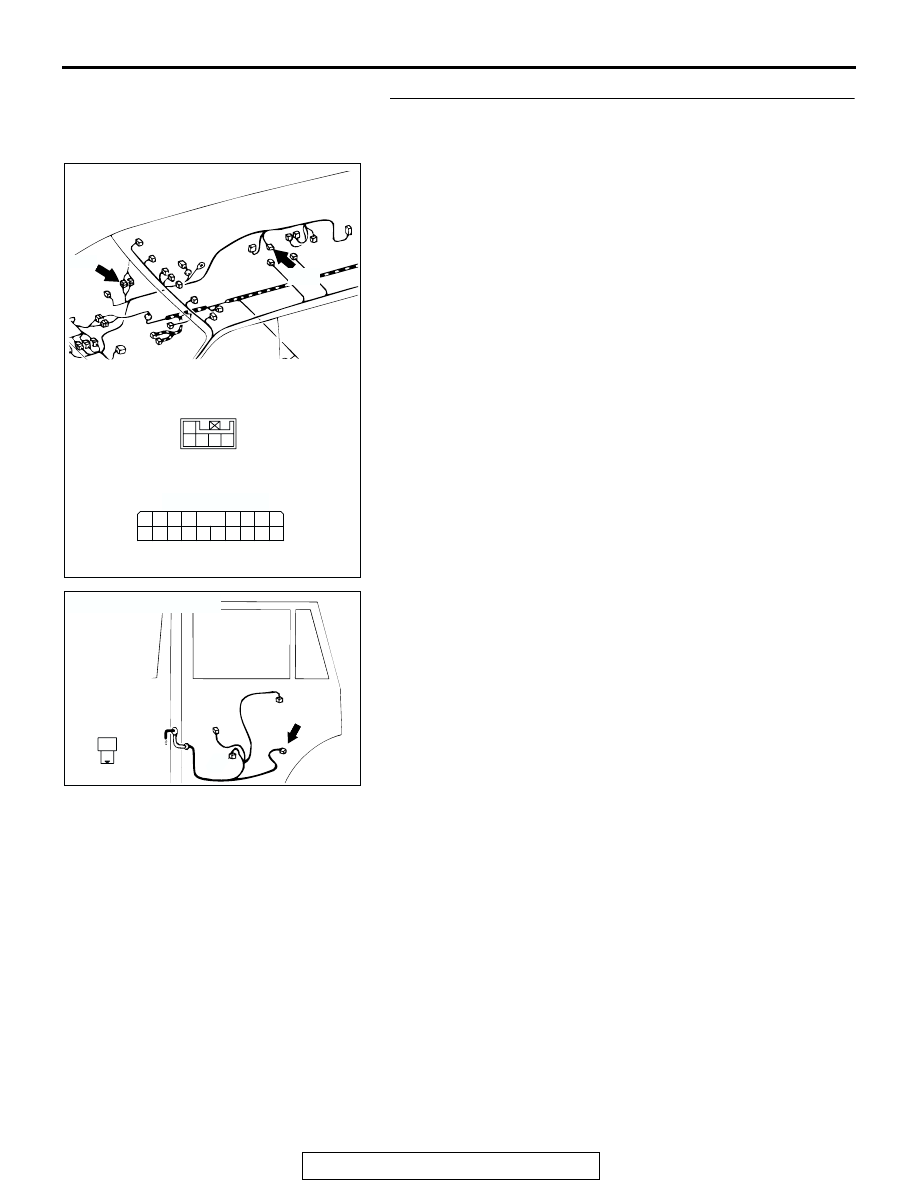Mitsubishi Montero Sport (2004+). Manual - part 558

RADIO AND TAPE PLAYER
TSB Revision
CHASSIS ELECTRICAL
54-219
STEP 49. Check the harness wires between amplifier
connector E-11 (terminal No.7 and 8) and rear door
speaker (RH) connector F-22 (terminal No.1 and 2).
NOTE: After inspecting intermediate connectors E-01, inspect
the wire. If intermediate connector E-01 is damaged, repair or
replace it. Refer to GROUP 00E, Harness Connector Inspec-
tion
.
Q: Are the harness wires between amplifier connector
E-11 (terminal No.7 and 8) and rear door speaker (RH)
connector F-22 (terminal No.1 and 2) in good condition?
YES : Go to Step 50.
NO : Repair or replace them. Refer to GROUP 00E,
Harness Connector Inspection
.
AC201711
3 2
1110
4
1312
1
9
5
6
1615
7
8
1817
14
4 5
3
1
2
CONNECTORS: E-01, E-11
E-11 COMPONENT SIDE
AB
E-01
E-11
E-01
AC201710
CONNECTOR: F-22
REAR
DOOR
(RH)
2
1
AB
COMPONENT
SIDE
F-22 (B)